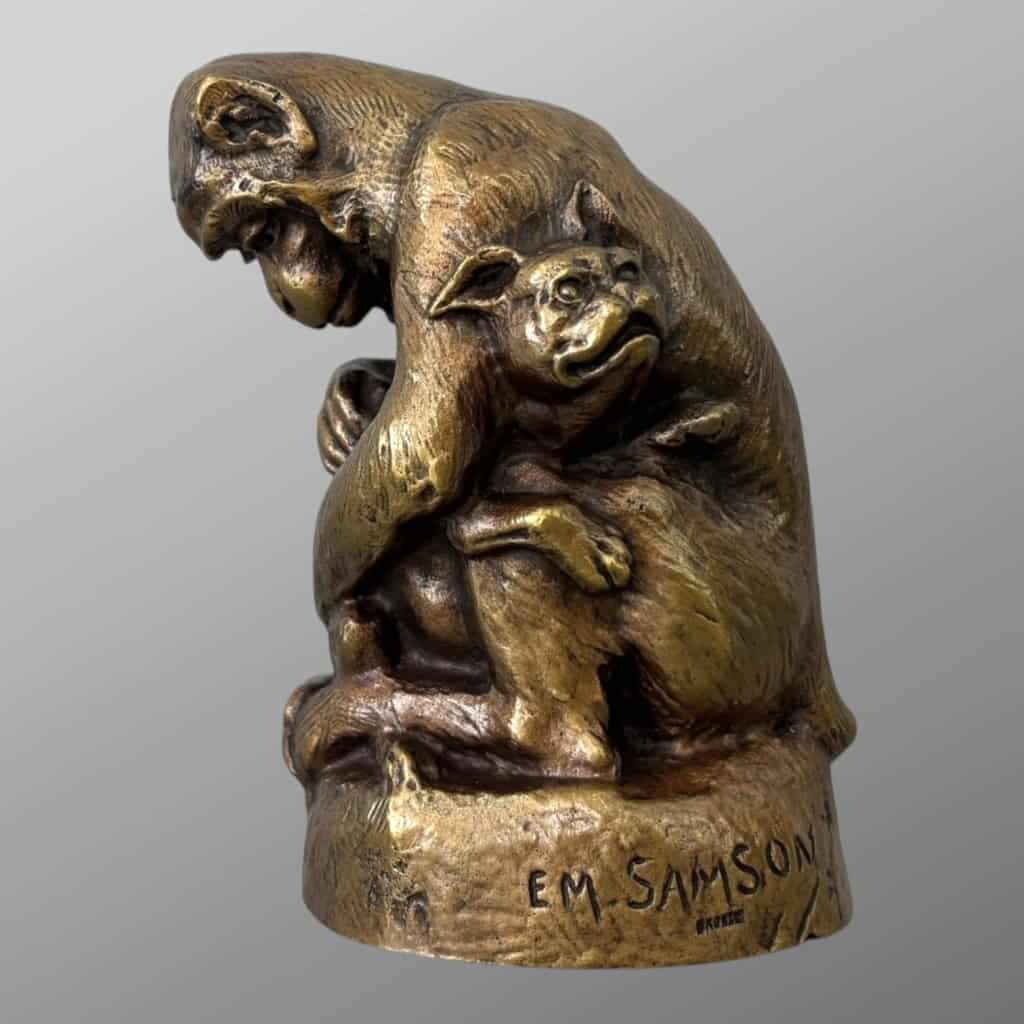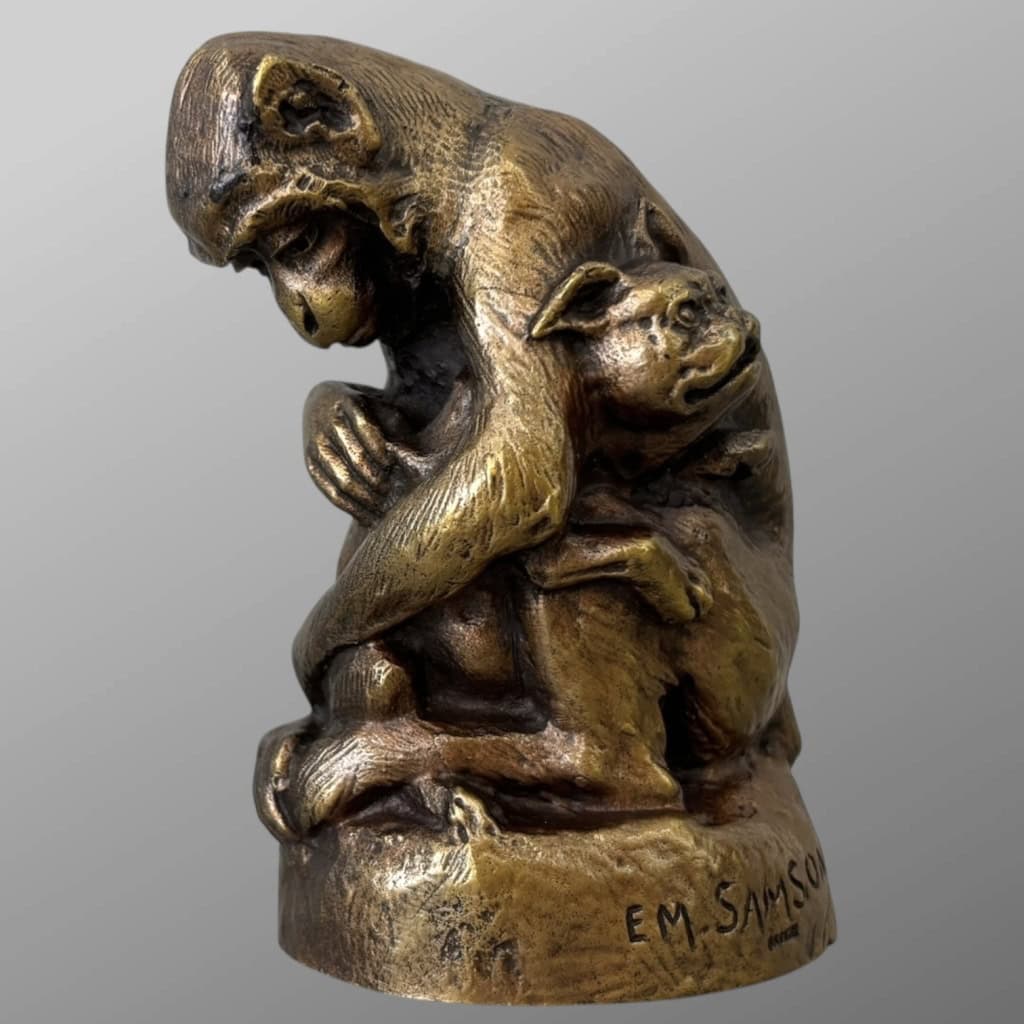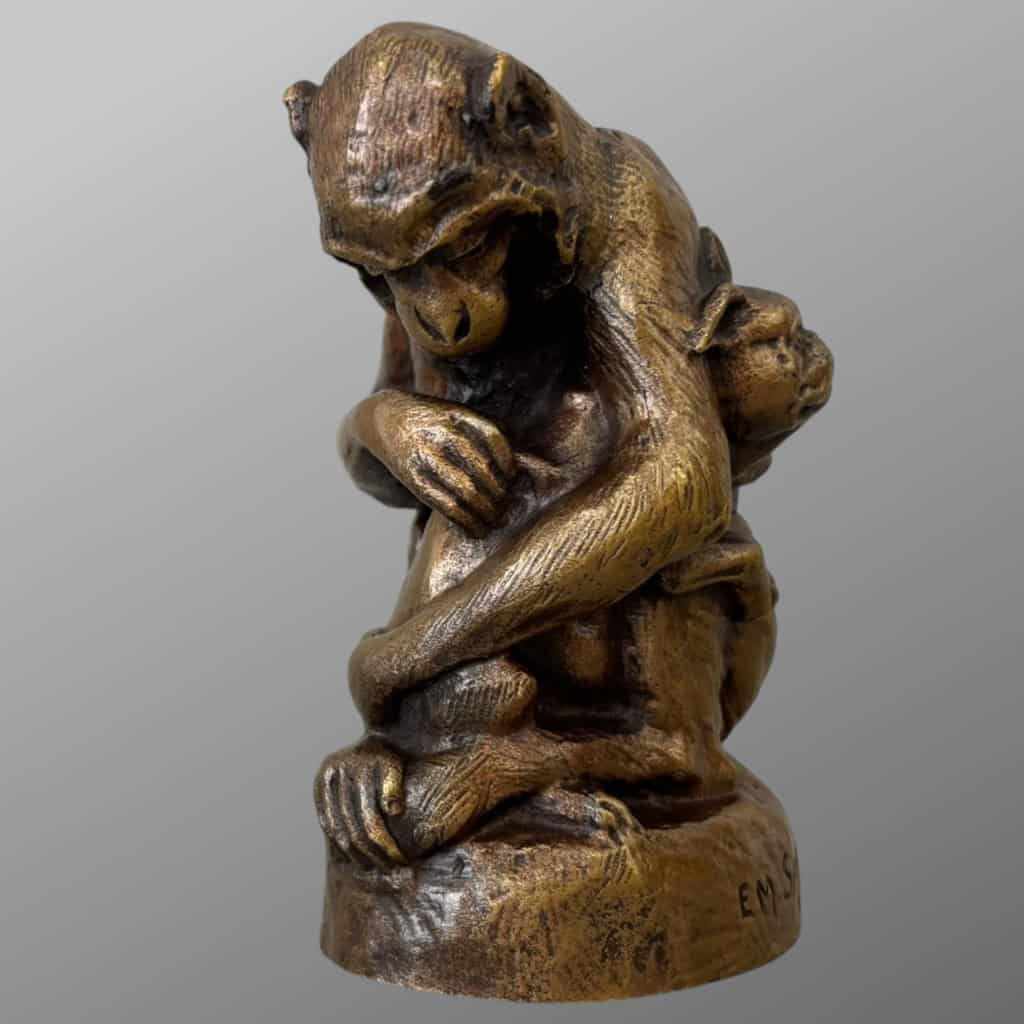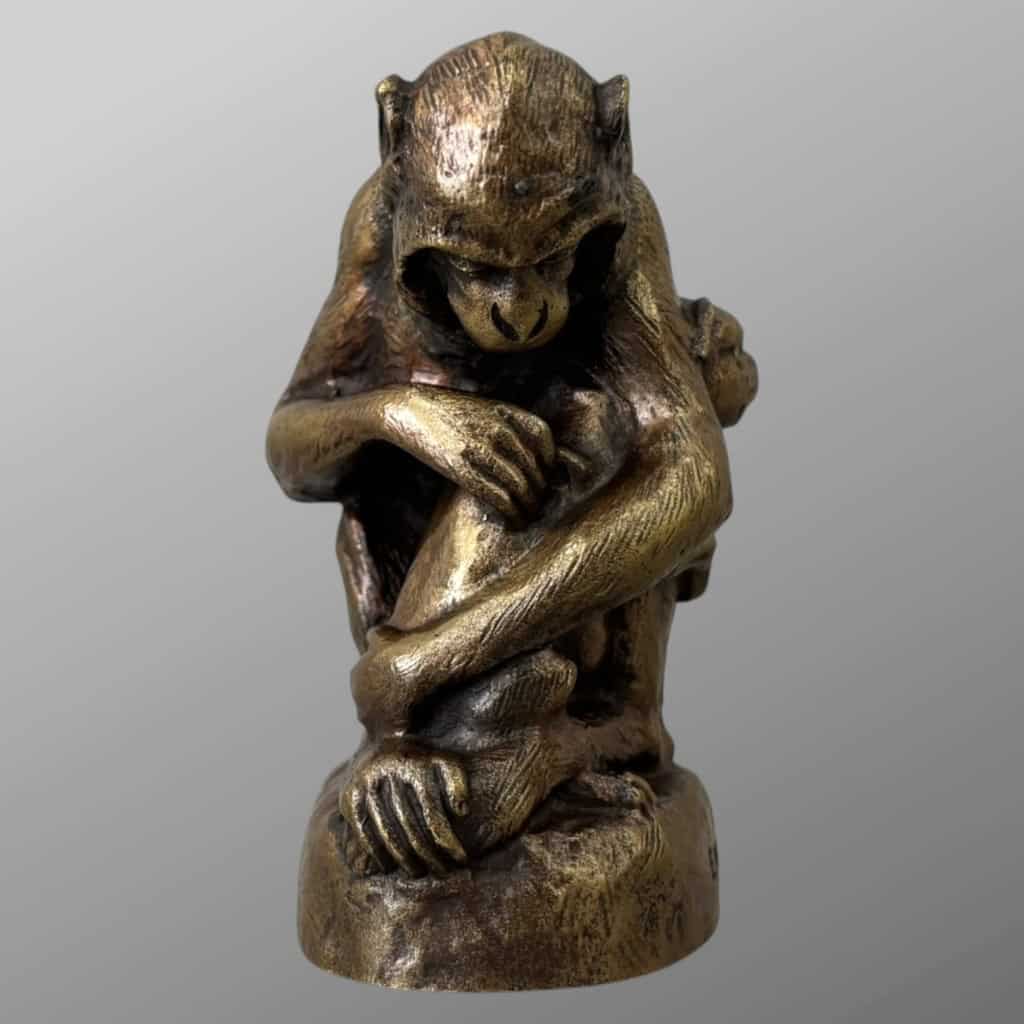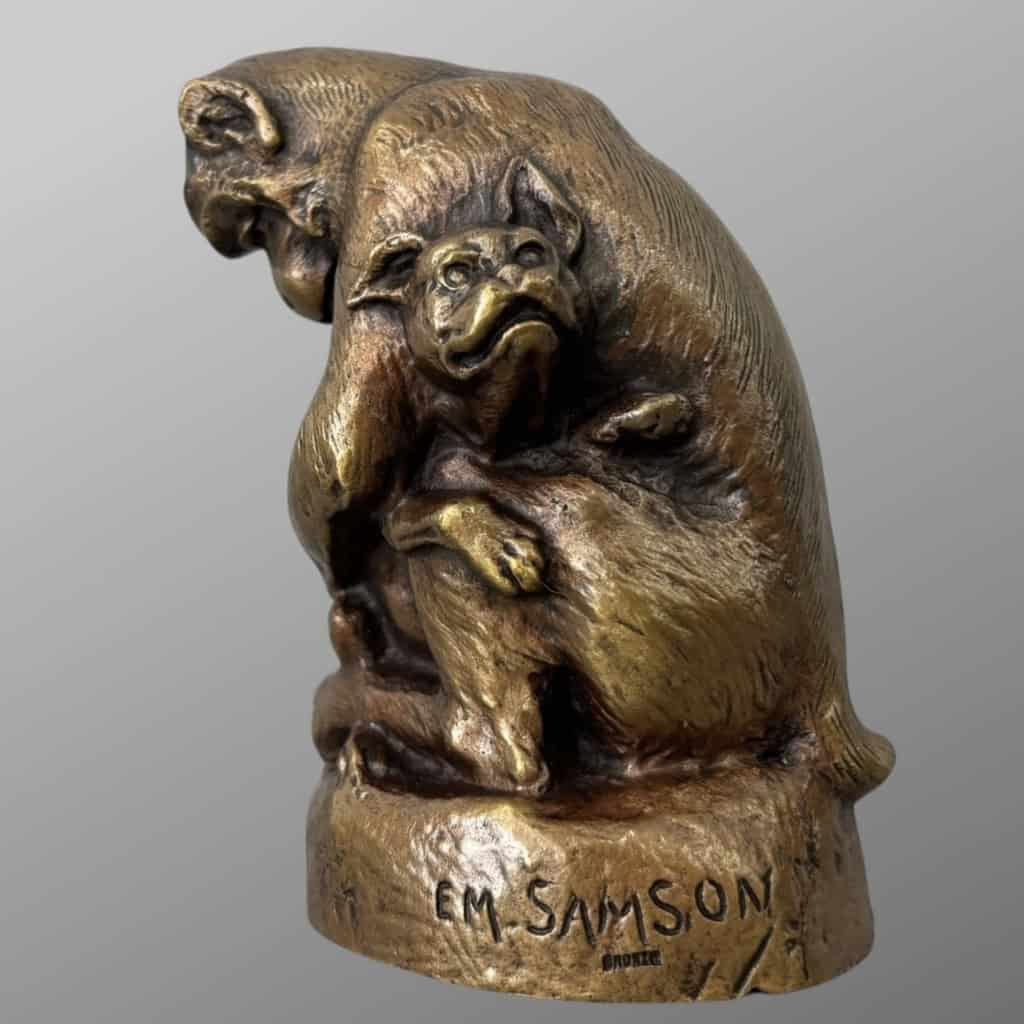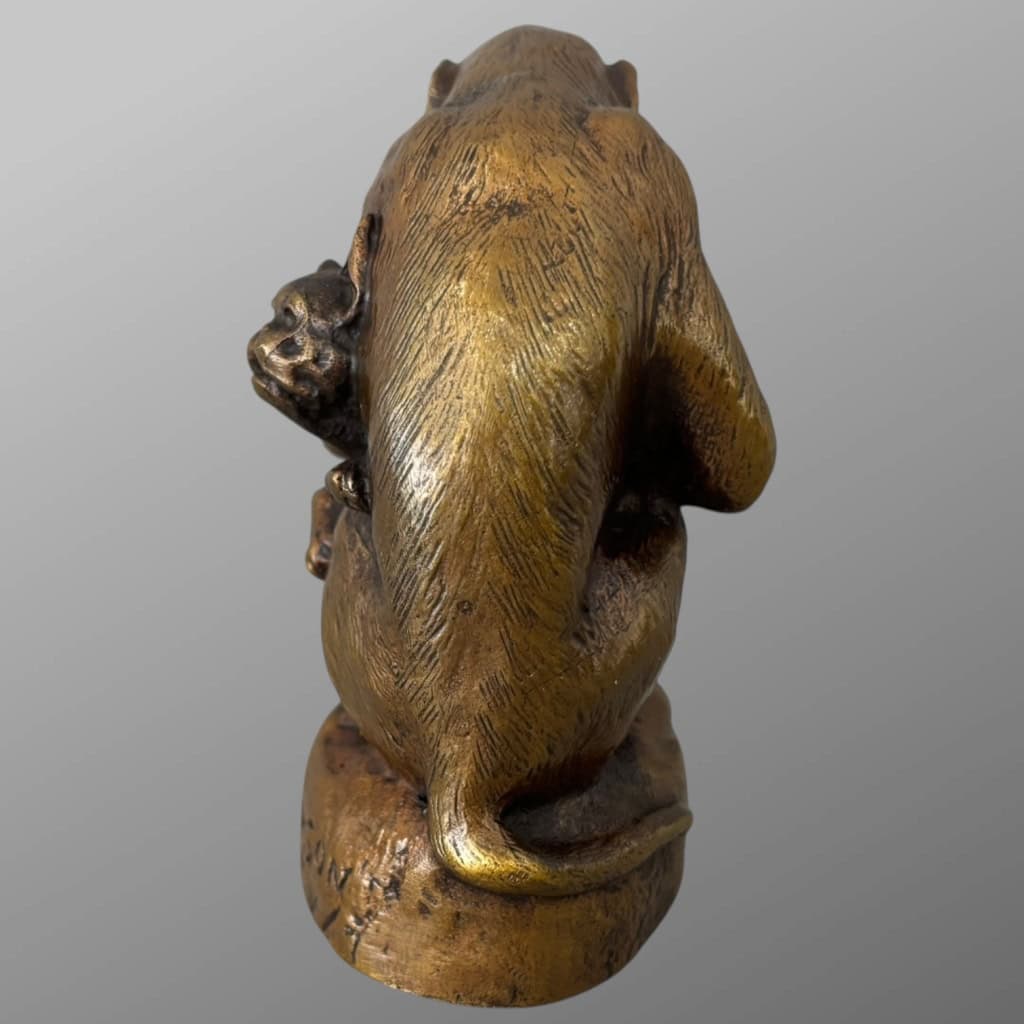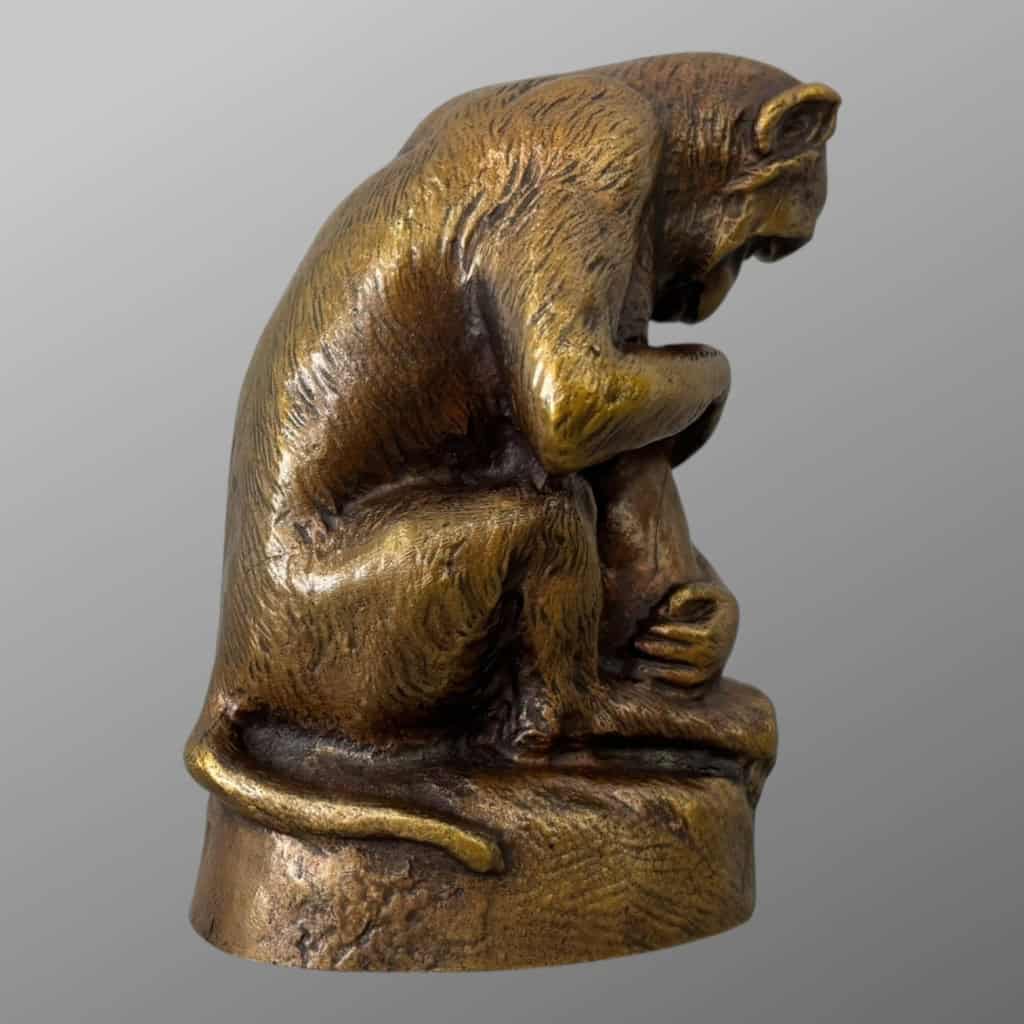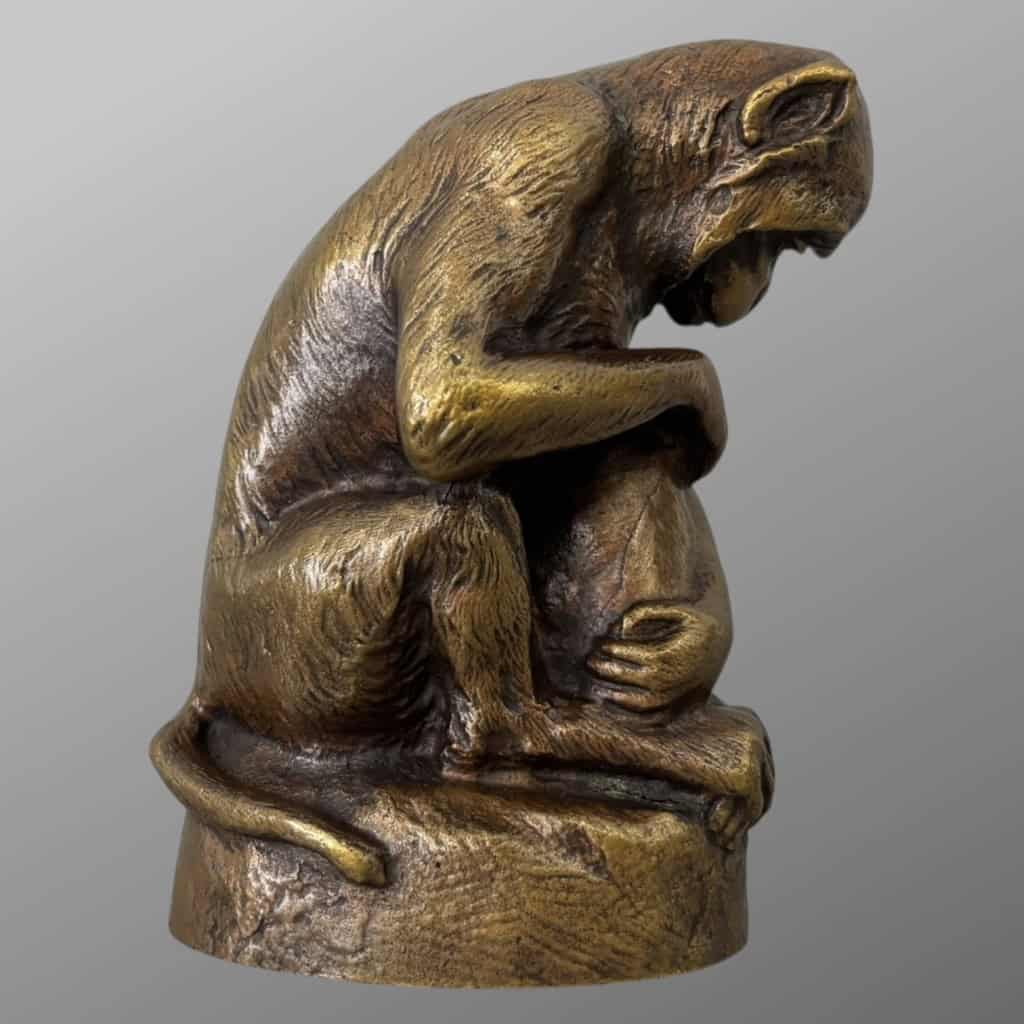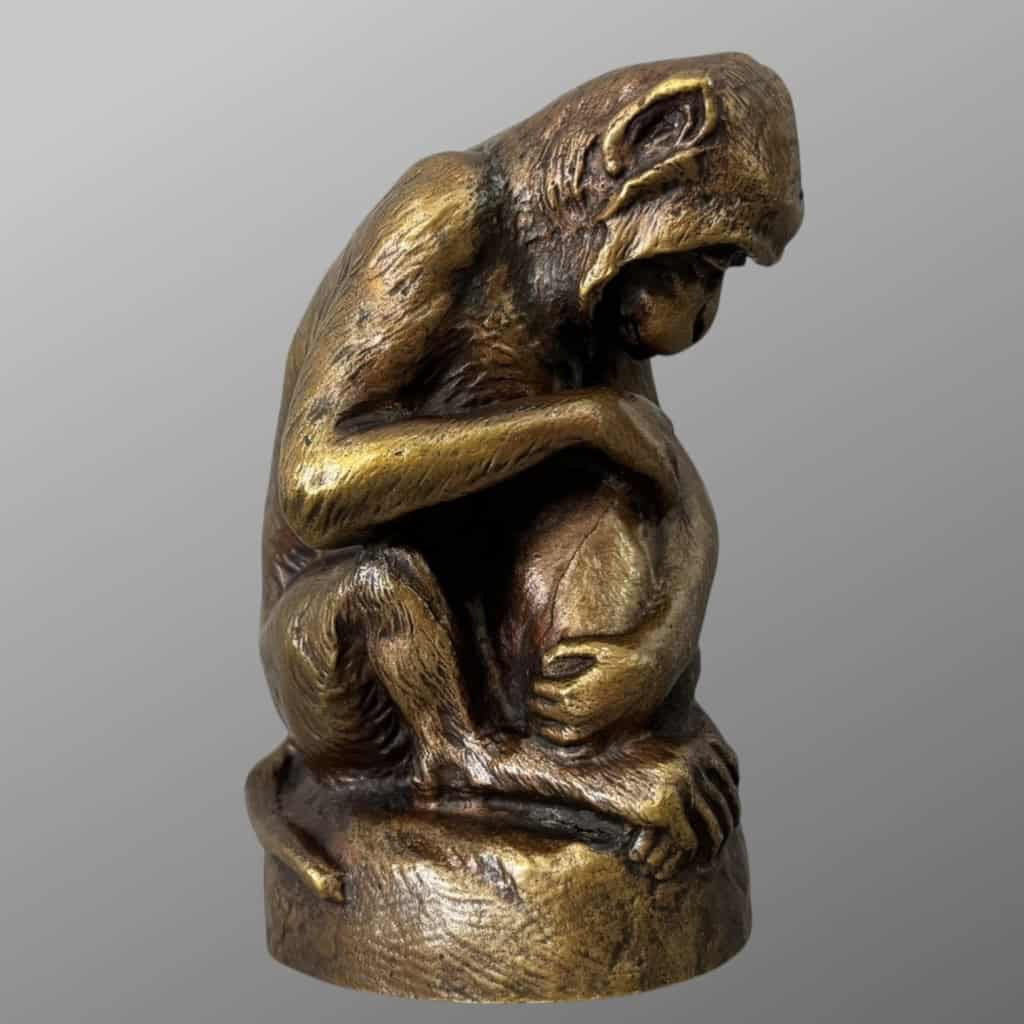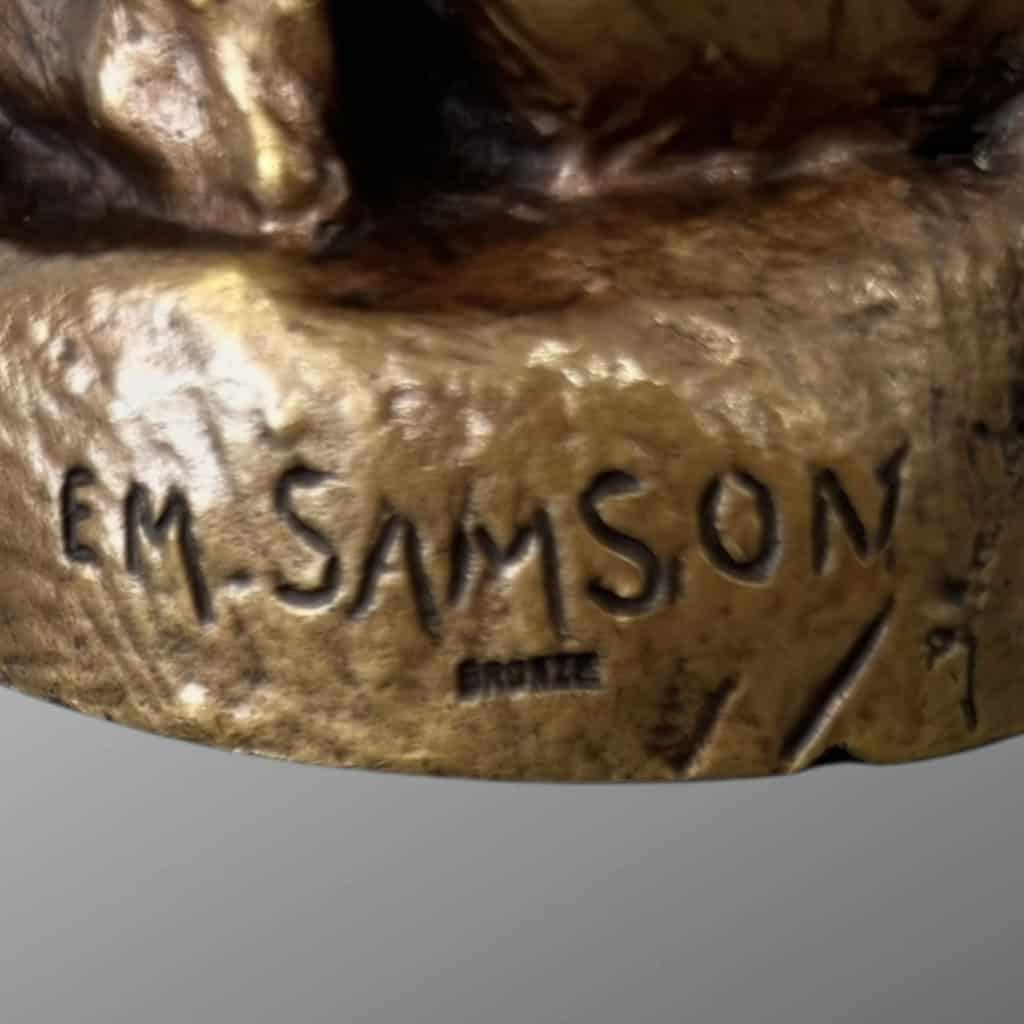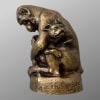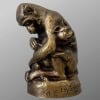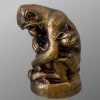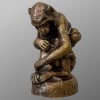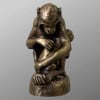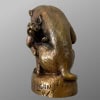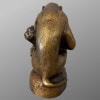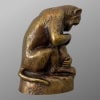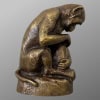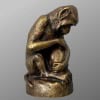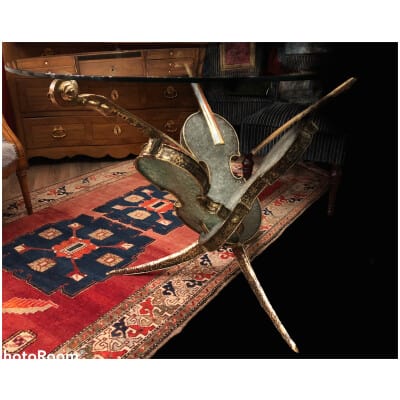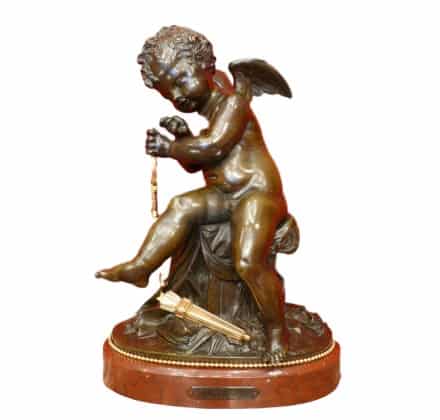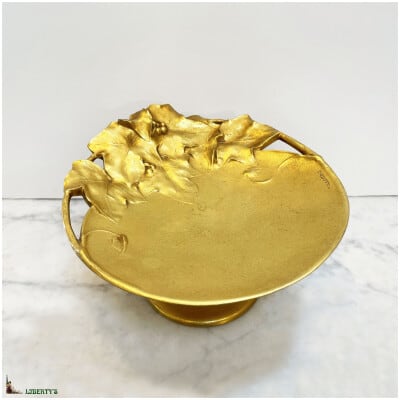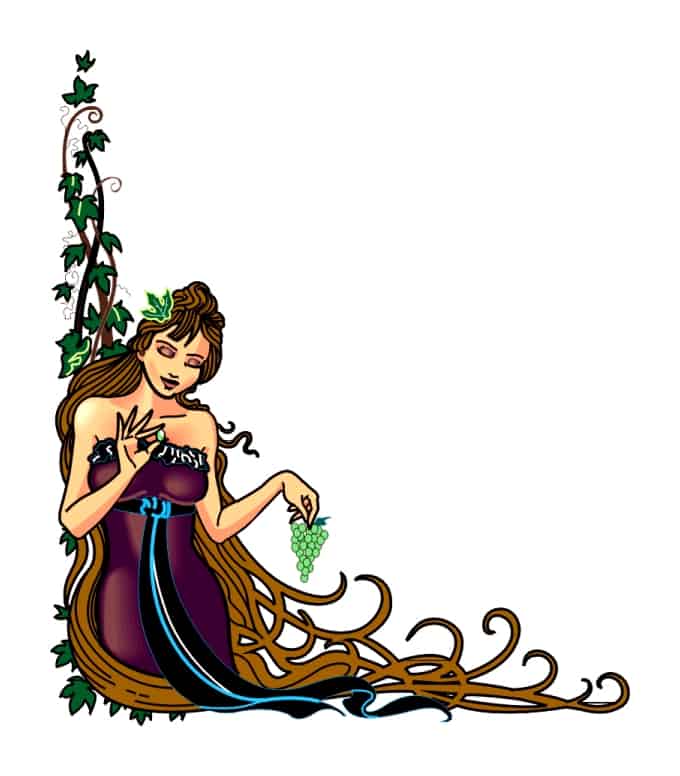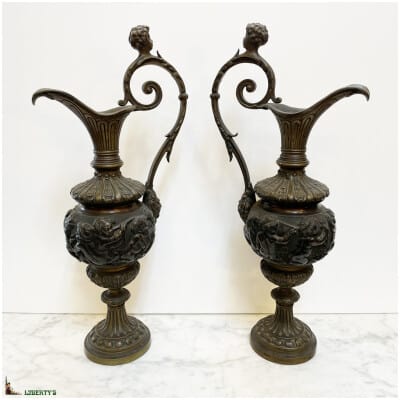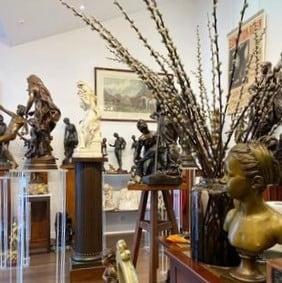
CaTaLogUE Des PucEs
Sculpture – Singe et Chien , Emmanuel Samson (1860-1926) – Bronze
Disponibilité :
EN STOCK€1.200,00
Rare épreuve en bronze à patine brune nuancée , figurant un singe épouillant un chien de race bouledogue , par le sculpteur Emmanuel Samson (1860-1926) .
Signature du sculpteur « EM.SAMSON » , en creux sur la terrasse naturaliste .
Cachet « BRONZE » sous la signature .
Sculpture d’édition ancienne , période fin XIXème siècle .
Très bon état de conservation et de patine .
Hauteur : 10 cm
Rare bronze proof with a nuanced brown patina , depicting a monkey delousing a bulldog , by the sculptor Emmanuel Samson (1860-1926) .
Signature of the sculptor « EM.SAMSON », intaglio on the naturalistic terrace .
Stamp « BRONZE » under the signature .
Old edition sculpture , late 19th century period .
Very good condition of conservation and patina .
Height : 10 cm

Emmanuel Samson (1860-1926)
Emmanuel Samson Chamchain , dit « Emmanuel Samson » , est un célèbre sculpteur et peintre français .
Emmanuel Samson naît le 5 mai 1860 à Paris , il grandit dans un environnement artistique .
Son père, Moïse Chamchain , dit « Maurice Samson » , est antiquaire , doreur et sculpteur .
Sa mère , Henriette Meyer , est la fille d’un dessinateur sur étoffes , originaire de Mulhouse .
Ses oncles maternels : Alfred Meyer, céramiste émailleur réputé , Émile Meyer , lithographe , et Jacques Meyer, dit « Henri Meyer », illustrateur de renom .
Élève d’Alphonse de Neuville et de Jean-Léon Gérôme , il fut un représentant notable de la peinture et sculpture animalières du XIXᵉ et XXᵉ siècles .
Il expose au Salon des Indépendants en 1889 .
En 1890 , Emmanuel Samson expose sa sculpture « Relais Volant » dans le cadre de l’Exposition internationale de Blanc et Noir, au Pavillon de la Ville de Paris sur les Champs Élysées .
En 1894 , il expose au Musée de Versailles . Il est soutenu par la Société des amis des arts du département de Seine-et-Oise .
Au début du vingtième siècle , dans le cadre de l’Exposition Canine de 1903 , qui se tient aux Tuileries sous la houlette de la Société Centrale pour l’Amélioration des Races de Chiens en France , Emmanuel Samson expose des œuvres qualifiées par la presse spécialisée de « brillantes et de tout premier ordre ».
En 1907 , il présente ses toiles au Salon des Peintres et Sculpteurs de Chasse et Vénerie , ainsi qu’à l’Exposition Canine de 1907. L’année suivante , il expose de nouveau à l’Exposition canine de 1908 organisée par le Petit Salon de la Société des Peintres et Sculpteurs de chevaux .
En 1909 , son œuvre « Relais volant » est présentée au Salon des artistes français .
Lors de la grande crue de la Seine en janvier 1910 , Emmanuel Samson peint des scènes originales d’animaux en perdition face à la montée des eaux . Il participe ainsi , par la vente de ses représentations sur cartes postales , à l’élan de solidarité au bénéfice des sinistrés .
La même année , il expose à nouveau ses peintures à l’Exposition Canine de 1910, que le journal « L’Illustré Parisien » qualifie de « Great event de la saison parisienne » .
En 1911 , Emmanuel Samson présente des études de chiens au Salon de l’École française , qui expose exclusivement des réalisations d’artistes français .
Comme le rapporte le journal « La Liberté », « les études de chiens de M. Emmanuel Samson ont de la verve et de la drôlerie ».
Emmanuel Samson continue d’exposer au Salon des artistes français jusqu’à la fin de sa vie .
Le 26 avril 1926 , à 66 ans , il décède à son domicile parisien du 63 rue Caulaincourt.
La revue de « L’Union Provinciale des Arts Décoratifs », datée du 1er juillet 1926 , lui rend hommage en ces termes : « Je voudrais adresser un hommage au brave homme et à l’artiste de talent qu’était le regretté peintre et sculpteur animalier Emmanuel Samson , mort tout récemment et dont les belles œuvres figuraient au Salon des artistes français depuis de longues années » .
Une rétrospective de l’œuvre d’Emmanuel Samson est organisée en 1927 , dans les galeries du Grand Palais , dans le cadre de la trentième Exposition des Peintres et Sculpteurs de Chevaux au Concours Hippique .
Elle laisse découvrir l’évolution artistique du peintre et sculpteur animalier .
Emmanuel Samson (1860-1926)
Emmanuel Samson Chamchain , known as « Emmanuel Samson », is a famous French sculptor and painter .
Emmanuel Samson was born on May 5 , 1860 in Paris , he grew up in an artistic environment .
His father, Moïse Chamchain, known as « Maurice Samson », is an antique dealer, gilder and sculptor .
His mother, Henriette Meyer, was the daughter of a fabric designer from Mulhouse .
His maternal uncles were Alfred Meyer , a renowned ceramicist and enameller , Emile Meyer , a lithographer , and Jacques Meyer, known as « Henri Meyer », a renowned illustrator .
A student of Alphonse de Neuville and Jean-Léon Gérôme , he was a notable representative of animal painting and sculpture in the 19th and 20th centuries .
He exhibited at the Salon Of Independents in 1889 .
In 1890 , Emmanuel Samson exhibited his sculpture « Flying Relay » as part of the International Exhibition of Black and White , at the Pavillon of the City of Paris on the Champs Elysees .
In 1894 , he exhibited at the Versailles Museum . He is supported by the Society of Friends of the Arts of the Seine-et-Oise department .
At the beginning of the twentieth century, as part of the 1903 Dog Show , held at the Tuileries under the auspices of the Central Society for the Improvement of Dog Breeds in France , Emmanuel Samson exhibited works described by the specialist press as « brilliant and of the highest order » .
In 1907 , he presented his paintings at the Salon of Painters and Sculptors of Hunting and Hunting , as well as at the 1907 Dog Show .
The following year, he exhibited again at the 1908 Dog Show organized by the Petit Salon of the Society of Painters and Sculptors of Horses .
In 1909 , his work « Flying Relay » was presented at the Salon of French Artists .
During the great flood of the Seine in January 1910 , Emmanuel Samson painted original scenes of animals in distress faced with the rising waters .
He thus participated , by the sale of his representations on postcards , in the surge of solidarity for the benefit of the victims .
The same year , he exhibited his paintings again at the Canine Exhibition of 1910 , which the newspaper « The Parisian Illustrated » described as « the Great event of the Parisian season » .
In 1911 , Emmanuel Samson presented studies of dogs at the Salon of the French School , which exclusively exhibited works by French artists . As reported by the newspaper « The Freedom » , « Mr. Emmanuel Samson’s studies of dogs have verve and humor » .
Emmanuel Samson continued to exhibit at the Salon des Artistes Français until the end of his life .
On April 26 , 1926 , at the age of 66 , he died at his Parisian home at 63 rue Caulaincourt .
The review of « The Provincial Union of Decorative Arts », dated July 1 , 1926 , pays tribute to him in these terms : « I would like to pay tribute to the brave man and talented artist that was the late animal painter and sculptor Emmanuel Samson , who died very recently and whose beautiful works were featured in the French Artists’ Fair for many years ».
A retrospective of the work of Emmanuel Samson was organized in 1927, in the galleries of the Grand Palais , as part of the thirtieth Exhibition of Painters and Sculptors of Horses at the Horse Show .
It reveals the artistic evolution of the animal painter and sculptor .
Disponibilité :
EN STOCK| Lieux | |
|---|---|
| Siècle | |
| Style | |
| Type d'Objet |
Partagez cette fiche :
Produits similaires
-
-
-
Objets de Décoration
Coupe sur pied Art-Nouveau bronze doré, signée F. Claessens, diam. 20 cm (Deb. XXe)
€680,00 -
Objets de Décoration
Paire d’aiguières en bronze patiné à têtes de putti, panse ornée d’un cortège d’angelots, haut. 43 cm (Fin XIXe)
€2.400,00
